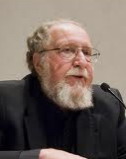Urban planning, sustainable development experts support BrooklynSpeaks’ challenge to approval of Atlantic Yards 2009 modified plan
Contact: Linda Gross, LCG Communications – (917) 767-1141
On March 3, several BrooklynSpeaks sponsors seeking to reverse the Empire State Development Corporation’s (ESDC) 2009 approval of a plan extending construction of the Atlantic Yards project from ten to twenty-five years, filed affidavits with the court from leading authorities in urban planning and sustainable development. The affidavits by Ronald Shiffman of Pratt Institute, James Goldstein of Tellus Institute, and Majora Carter of the Majora Carter Group were submitted in support of BrooklynSpeaks’ supplemental petition challenging ESDC’s response to a November 2010 court decision ordering the agency to explain its rationale for failing to prepare a supplemental environmental impact statement (SEIS) at the time it approved the modified general project plan (MGPP).
“When it approved the 2009 MGPP, ESDC ignored the law, the facts, common sense and, most importantly, the opportunity to engage the community to help make Atlantic Yards work for Brooklyn,” said Gib Veconi of the Prospect Heights Neighborhood Development Council. “The statements of these experts show how ESDC was deficient in its approval of Forest City Ratner’s proposed changes to the construction schedule, and that ESDC failed to learn from either the failures or successes of other large urban redevelopment projects.”
 The founder and former Executive Director of the Pratt Center for Community Development, as well as a former member of the New York City Planning Commission, Mr. Shiffman is currently a professor of urban planning at Pratt Institute. In his affidavit, he notes that the City environmental review guidelines indicate an environmental assessment include an interim build year for projects whose duration is expected to be greater than ten years. Mr. Shiffman writes, “ESDC and its consultants would surely have been aware of this, and the agency’s failure to undertake a supplemental environmental impact statement is an obvious omission.”
The founder and former Executive Director of the Pratt Center for Community Development, as well as a former member of the New York City Planning Commission, Mr. Shiffman is currently a professor of urban planning at Pratt Institute. In his affidavit, he notes that the City environmental review guidelines indicate an environmental assessment include an interim build year for projects whose duration is expected to be greater than ten years. Mr. Shiffman writes, “ESDC and its consultants would surely have been aware of this, and the agency’s failure to undertake a supplemental environmental impact statement is an obvious omission.”
 James Goldstein is Senior Fellow and Director of the Sustainable Communities program at Tellus Institute, a nonprofit research and policy organization in Boston, Massachusetts. In his affidavit, Mr. Goldstein analyzes several large urban development initiatives which have experienced lengthy construction delays impacting local communities, concluding, “The recent cases of Filene’s One Franklin development, Harvard’s Allston Initiative, and New London’s Fort Trumbull project all highlight the quantifiable and qualitative costs that arise in the course of unanticipated project delays. They invite a much more deliberate reconsideration of expectations about project costs and benefits once a delay occurs and, as in the case of One Franklin, demand a much more thorough analysis of the unanticipated impacts that inevitably arise from those delays.”
James Goldstein is Senior Fellow and Director of the Sustainable Communities program at Tellus Institute, a nonprofit research and policy organization in Boston, Massachusetts. In his affidavit, Mr. Goldstein analyzes several large urban development initiatives which have experienced lengthy construction delays impacting local communities, concluding, “The recent cases of Filene’s One Franklin development, Harvard’s Allston Initiative, and New London’s Fort Trumbull project all highlight the quantifiable and qualitative costs that arise in the course of unanticipated project delays. They invite a much more deliberate reconsideration of expectations about project costs and benefits once a delay occurs and, as in the case of One Franklin, demand a much more thorough analysis of the unanticipated impacts that inevitably arise from those delays.”
 Majora Carter, the former executive director of Sustainable South Bronx and the current President of the Majora Carter Group, is an internationally-recognized authority on community development, environmental justice, and green job training, a MacArthur “genius,” and host of the NPR series, “The Promised Land.” She challenges the ESDC’s contention that an additional 15 years of construction would result in no additional adverse impact to surrounding neighborhoods, writing, “This conclusion is not just counterintuitive. It reflects a national trend in land use policy that prioritizes the interests of private developers over the sustainability of vibrant communities.” As an alternative, Ms. Carter goes on to cite examples of redevelopment projects in New York City, including Melrose Commons in the Bronx, which were initially opposed by local communities, but were made successful when government engaged residents and local business in the planning process. “While doing so in and of itself will not guarantee expected project benefits are delivered, thorough environmental analysis and ongoing oversight, along with continuous community input, will reduce the chance that a project intended to redevelop and renew underutilized land will instead create new blight,” Ms. Carter writes.
Majora Carter, the former executive director of Sustainable South Bronx and the current President of the Majora Carter Group, is an internationally-recognized authority on community development, environmental justice, and green job training, a MacArthur “genius,” and host of the NPR series, “The Promised Land.” She challenges the ESDC’s contention that an additional 15 years of construction would result in no additional adverse impact to surrounding neighborhoods, writing, “This conclusion is not just counterintuitive. It reflects a national trend in land use policy that prioritizes the interests of private developers over the sustainability of vibrant communities.” As an alternative, Ms. Carter goes on to cite examples of redevelopment projects in New York City, including Melrose Commons in the Bronx, which were initially opposed by local communities, but were made successful when government engaged residents and local business in the planning process. “While doing so in and of itself will not guarantee expected project benefits are delivered, thorough environmental analysis and ongoing oversight, along with continuous community input, will reduce the chance that a project intended to redevelop and renew underutilized land will instead create new blight,” Ms. Carter writes.
“Even though construction on the Barclays Center arena is underway, it’s not too late for the public to have a voice in the future of Atlantic Yards,” said Michelle de la Uz, executive director of the Fifth Avenue Committee. “Since ESDC and Forest City have so far refused to engage the local community or its elected representatives in a meaningful way, we have no choice but to ask the Court for a reversal of the 2009 MGPP and to halt further construction. Appropriate study of the impacts of 25 years of construction must be made.”
(A chronology of BrooklynSpeaks' challenge to the 2009 MGPP and relevant legal documents can be found here.)



